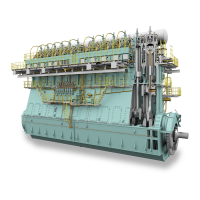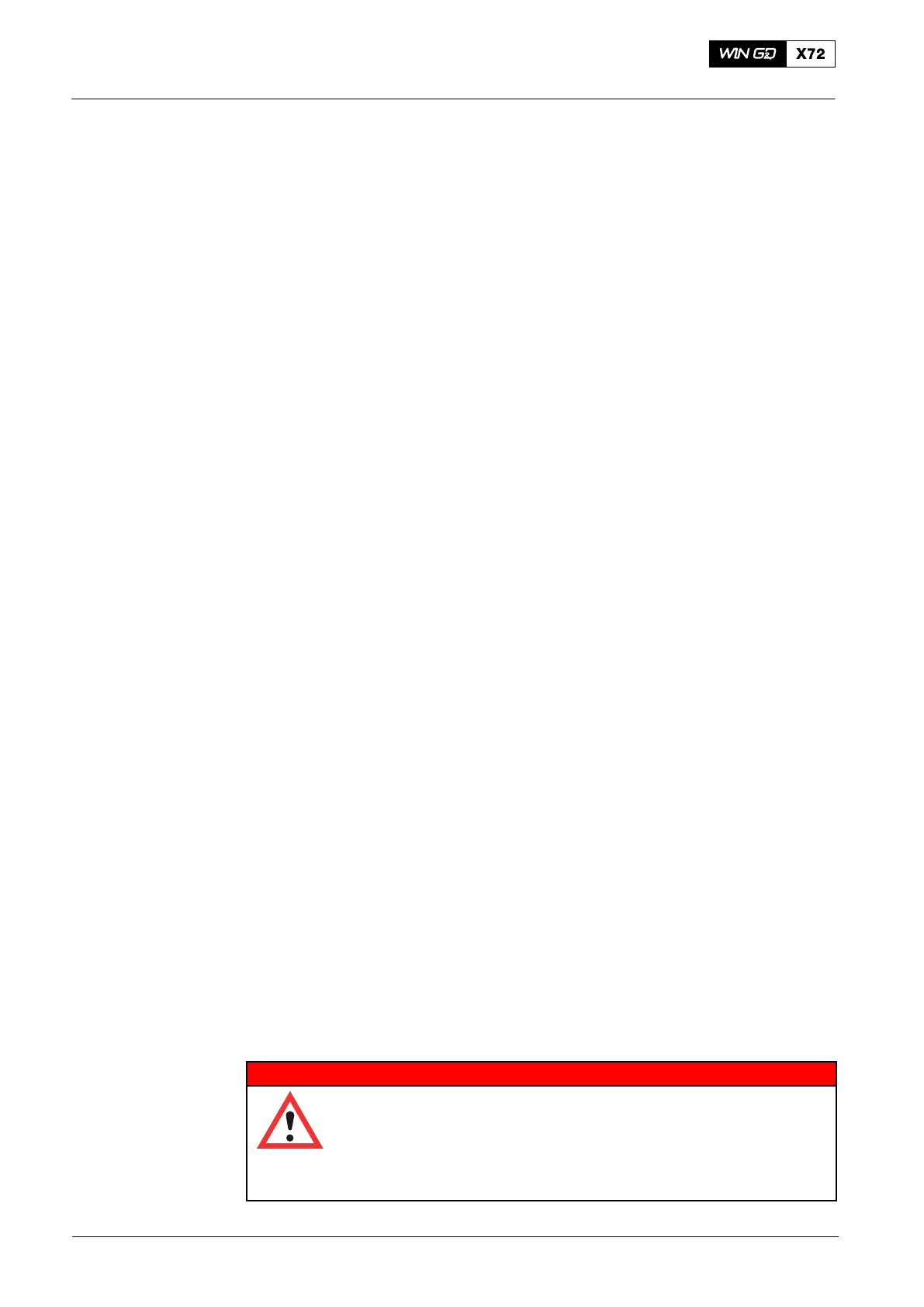Operation0710−1/A1
Winterthur Gas & Diesel Ltd.
6/ 12
The maximum permitted viscosity of the fuel that can be used in an installation is
related to the heating and fuel preparation facilities available. The flow rate and the
temperature of the fuel that flows through the centrifuges must be adjusted in relation
to the viscosity to get good separation. The temperature of the fuel must not be
increased to more than 150_C to get the recommended viscosity at the engine inlet.
This is because the fuel can start to decompose, get contamination and be dangerous
as it is possible that the temperature will be higher than the flash point.
3.2 Density
The composition of the fuel gives the density. A high density shows a high aromatic
content. It is not always possible to use conventional methods to measure the density
at 15_C. Thus, the measurement is made at a higher temperature and then converted
and adjusted to the reference temperature. Most bunkers are to the ISO 8217:2010
RMG specification, which has a maximum density of 991.0 kg/m
3
. Applicable fuel
preparation equipment, which can be adjusted for a fuel density greater than 991.0
kg/m
3
, must be available on board if high density fuels are used.
3.3 Calculated Carbon Aromaticity Index (CCAI)
The ignition and combustion properties of the fuel in a diesel engine are related to the
specific engine design, load profile and fuel properties.
The CCAI is a calculated quantity of the ignition properties or ignition interval of the
fuel related to the viscosity and density. The CCAI has no effect on the combustion
properties. The CCAI limit is useful to measure fuels with unusual density-viscosity
relations.
More tests are available to find ignition and combustion properties and these can be
helpful to examine the performance of fuels.
3.4 Sulphur
Sulphur limits are not specified in ISO 8217:2010 because statutory specifications put
a limit on this value. The maximum sulphur level that can be used in Wärtsilä 2-stroke
engines is 3.5% m/m.
The alkalinity (base number (BN)) of the cylinder lubricating oil must be selected in
relation to the sulphur level of the fuel in use. The engine can operate for short
periods (some hours) with a cylinder lubricating oil that has an incorrect BN, but a
longer operation time must be prevented.
Indications for the selection of the BN of the lubricating oil in relation to the sulphur
content of the fuel are found in:
D 0410−1, Running-in of cylinder liners and rings
D 0750−1, Lubricating Oils, paragraph 3.
3.5 Flash Point
The flash point is an important safety and fire hazard parameter for diesel fuels. Fuel
is always a fire hazard. There can be flammable vapors above the remaining fuel in
the tanks. There must be caution on ships when the temperature of the remaining fuel
is increased above the flash point to help with the filter process and injection.
3.6 Hydrogen Sulphide
WARNING
Danger: Hydrogen Sulphide (H
2
S) is a very toxic gas and exposure
to high concentrations is dangerous and can kill you. Be careful
when tanks or fuel lines are opened because there can be H
2
S
vapor. At low concentrations H
2
S smells almost the same as bad
eggs. You cannot sense H
2
S at moderate concentrations. H
2
S will
cause nausea and dizziness.
2016-11
Diesel Engine Fuels

